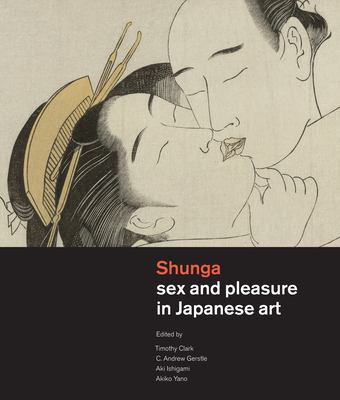
Shunga
by Timothy Clark (Editor), C. Andrew Gerstle (Editor), Aki Ishigami (Editor), Akiko Yano (Editor)
ISBN-10: 9004263268
ISBN-13: 9789004263260
$99.00
Book Specs
Binding
Trade Cloth
Publisher
Brill/ Hotei Publishing
Published on
Oct 18, 2013
Edition
st Edition
Dimensions
10.10x1.60x11.70 Inches
Weight
6.70 Pounds
About the Book
In early modern Japan, 1600-1900, thousands of sexually explicit paintings, prints, and illustrated books with texts were produced, known as 'spring pictures' (shunga). Frequently tender, funny and beautiful, shunga were mostly produced within the popular school known as 'pictures of the floating world' (ukiyo-e), by celebrated artists such as Utamaro and Hokusai. Early modern Japan was certainly not a sex-paradise; however, the values promoted in shunga are generally positive towards sexual pleasure for all. Official life in this period was governed by strict Confucian laws, but private life was less controlled in practice.
Shunga is in some ways a unique phenomenon in pre-modern world culture, in terms of the quantity, the quality and the nature of the art that was produced. This catalogue of a major exhibition at the British Museum marks the culmination of a substantial international research project and aims to answer some key questions about what shunga was and why it was produced. In particular the social and cultural contexts for sex art in Japan are explored.
Erotic Japanese art was heavily suppressed in Japan from the 1870s onwards as part of a process of cultural 'modernisation' that imported many contemporary western moral values. Only in the last twenty years or so has it been possible to publish unexpurgated examples in Japan and this ground-breaking publication presents this fascinating art in its historical and cultural context for the first time.
Drawing on the latest scholarship from the leading experts in the field and featuring over 400 images of works from major public and private collections, this landmark book looks at painted and printed erotic images produced in Japan during the Edo period (1600-1868) and early Meiji era (1868-1912). These are related to the wider contexts of literature, theatre, the culture of the pleasure quarters, and urban consumerism; and interpreted in terms of their sensuality, reverence, humour and parody.
This title is only available through Hotei Publishing in the United States of America, Canada and the Philippines.
